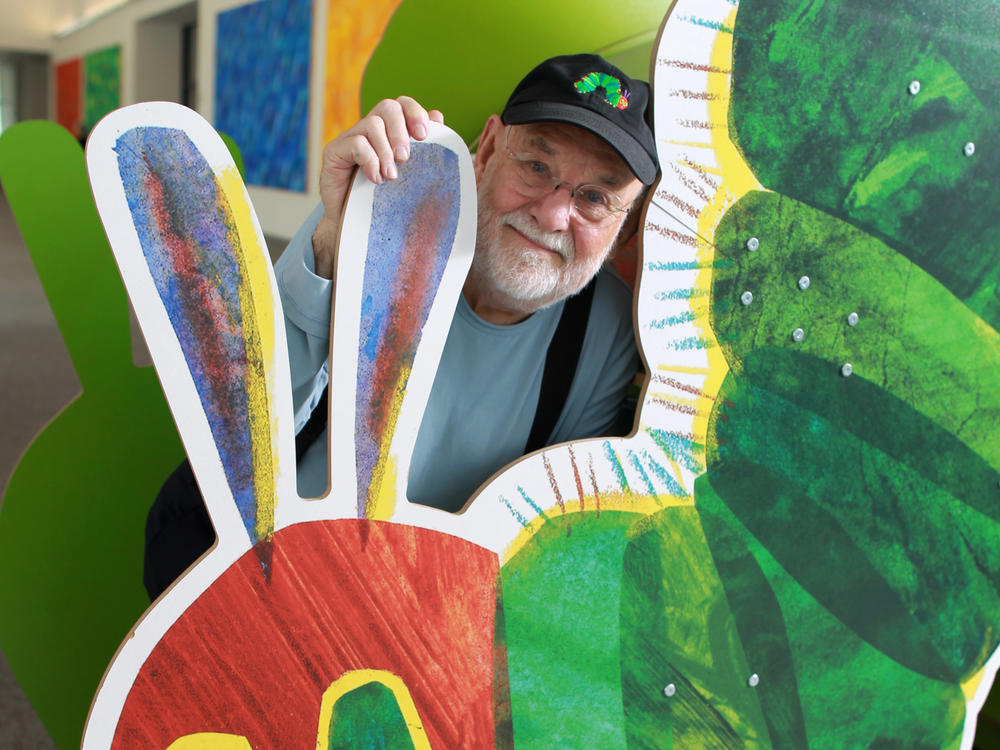Section Branding
Header Content
Opinion: Eric Carle Brought Light and Color To Our Lives
Primary Content
He called himself a "picture-writer." But there was not a lot about the way Eric Carle grew up to make you think he'd go on to create books for children about bugs, birds, bears and blue horses.
He was born in Syracuse, New York, but his family moved back to Germany when he was 6. Eric was conscripted at 15 to dig trenches along the Siegfried Line, the German defense emplacement of tunnels and tank traps that was brutal to build, and relentlessly bombarded by the Allies.
Eric spoke very little of those times. His wife, he once told me, said he must have a lot of fright and anxiety bottled up inside.
The power of art to express what's hard to say, and can't be put away, might have helped inspire the more than 70 books he wrote — told in bright collages, vivid colors and playful words about creatures who change, grow, even blossom.
The Very Hungry Caterpillar, Eric's best-known book, has sold more than 55 million copies in 70 languages. It is destined to keep selling, long after Eric's death this week at the age of 91. It is the story of a caterpillar of eclectic appetites who pops from his egg and eats through first rows and rows of fruit, then cake, ice cream, a pickle, Swiss cheese, salami and too many other entrees to mention, on his way to becoming a butterfly.
On the book's 50th anniversary, in 2019, Eric said through his publisher that he hoped young readers who may feel a little cowed by life may see that, "You — little insignificant caterpillar — can grow up into a beautiful butterfly and fly into the world with your talent."
I interviewed Eric about his 2011 book, The Artist Who Painted A Blue Horse, in which he spoke openly about how the dark times of his adolescence had been brightened by art.
"Hitler dictated not only politics and everything, he also dictated art," he told us. Abstract and expressionist art were verboten. All art had to support a polemical regime message, not free minds and hearts. But Eric said he had a teacher who secretly showed him, "the work of the so-called degenerate artists" who had been banned.
So as an an adult in America, the man who dug trenches as a boy brought light and color into the eyes and minds of children, by giving life to green lions, pink rabbits, purple foxes and polka-dot donkeys.
"Well, there is no wrong color really," Eric told us. "And also, one must not stay within the lines."
Copyright 2021 NPR. To see more, visit https://www.npr.org.

